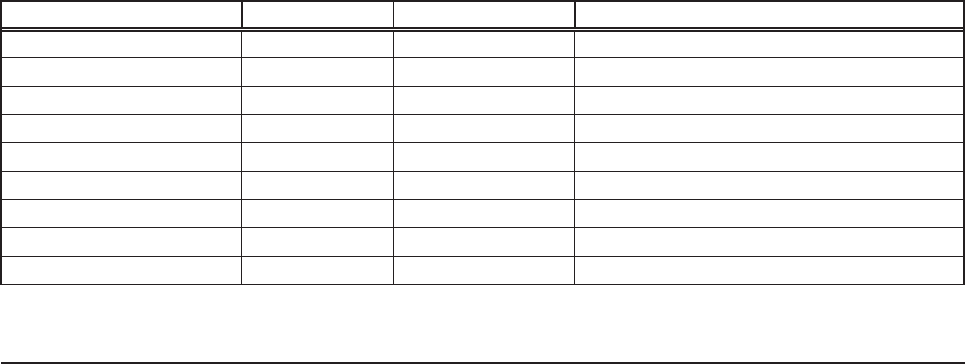
11
MN002000A © 2004 Navman NZ Ltd. All rights reserved. Proprietary information and specifications subject to change without notice.
RMC: recommended minimum specific GPS
data
The Jupiter receiver also supports the following
Navman proprietary output messages:
BIT: built-In test results
ERR: error/status
RID: receiver ID
ZCH: Jupiter channel status
These Navman proprietary messages conform to
the message format described below.
3.4.2 NMEA input messages
The Jupiter receiver supports the following
proprietary input messages:
IBIT: built-in test command, Navman
proprietary
ILOG: log control, Navman proprietary
INIT: receiver initialisation, Navman proprietary
IPRO: protocol, Navman proprietary
The INIT message is used to command
initialisation of the receiver and the IPRO message
is used to change the message protocol. The first
character of the message sentence is ‘P,’ followed
by a three-character mnemonic code for Navman
Systems Inc. (RWI) according to Appendix III of
the NMEA -0183 standard.
3.4.3 NMEA message format.
All NMEA-0183 data messages are in ASCII form.
Each message begins with ASCII $ (24
HEX
) and
ends with ASCII <CR> <LF>(0D
HEX
and 0A
HEX
).
The valid character set consists of all printable
ASCII characters, 20
HEX
to 7E
HEX
, except for the
reserved characters listed in Table 3-2.
Each NMEA message, or sentence, consists of
a set of fields separated by a comma delimiter
character. Each field can contain either a string
of valid characters or no characters (null field).
Valid characters must conform with the formats
described in Table 3-3.
The maximum number of characters in a sentence
is 82, consisting of a maximum of 79 characters
between the starting delimiter ‘$’ and the
terminating <CR> and <LF>. Since the number of
data fields can vary from sentence to sentence,
it is important that the ‘listener’ (or application
software) locate fields by counting delimiters
rather than counting the total number of characters
received from the start of the sentence.
3.4.5 NMEA-0183 approved sentences
An approved NMEA-0183 sentence contains the
following elements, in the order shown:
‘$’ Start of the sentence (24
HEX
)
<address field> Talker identifier and sentence
formatter.
[‘,’<data field>] Zero or more data fields.
‘*’ <checksum field>] Optional checksum field
<CR><LF> End of sentence delimiter (0D 0A
HEX
)
Note: Since the Jupiter receiver is a GPS device,
the ‘talker’ identifier is always ‘GP’.
3.4.6 Proprietary sentences
Proprietary sentences allow OEMs to transfer data
that does not fall within the scope of approved
NMEA sentences. A proprietary sentence contains
the following elements, in the order shown:
‘$’ start of the sentence (24
HEX
)
‘P’ proprietary sentence ID (50
HEX
)
<aaa> OEMs mnemonic code
[<valid characters, OEMs data>]
[‘*’<checksum field>] optional checksum field.
<CR><LF> end of sentence delimiter (0D 0A
HEX
).
3.4.7 Checksum
The checksum is the 8-bit exclusive OR (no start
or stop bits) of all characters in the sentence,
including delimiters (except for the $ and the
optional * delimiters). The hexadecimal value of
the most significant and least significant four bits of
the result are converted to two ASCII characters (0
to 9, A to F) for transmission. The most significant
character is transmitted first.
Character Hex value Decimal value Description
<CR> 0D 13 Carriage return (end of sentence delimiter)
<LF> 0A 10 Line feed (end of sentence delimiter)
$ 24 36 Start of sentence delimiter
* 2A 42 Checksum field delimiter
, 2C 44 Field delimiter
! 21 33 Reserved
\ 5C 92 Reserved
^ 5E 94 Reserved
. 7E 126 Reserved
Table 3-2 NMEA reserved characters


















